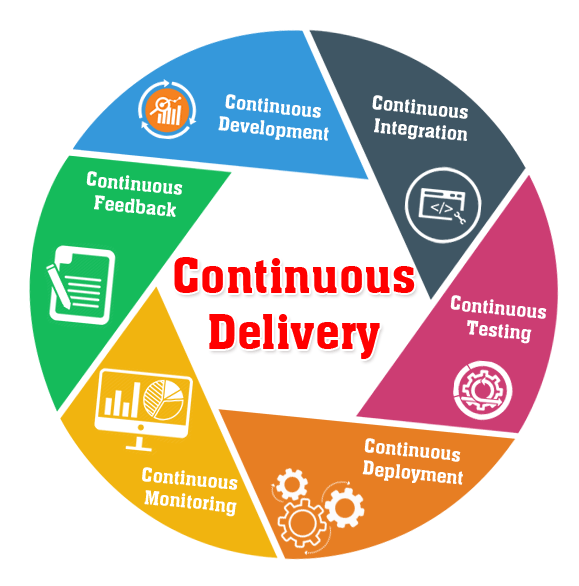The Benefits of Continuous Delivery
Just as a rising tide lifts all shifts, continuous deliver makes everyone faster and more efficient.
Join the DZone community and get the full member experience.
Join For Free
In the world of software, continuous delivery is one such development practice that presents benefits to all stakeholders: Development, Operations, Testers, and Business Teams. Continuous Delivery is for every organization driven by software; it is hard to think of business not using software.
It benefits people and requires changes in people for better adoption and implementation. It starts with collaboration, changes in skillsets, perfect hand-offs, a top-down drive for CD, adoption of technology, elastic environments, stronger pre-production, and automation.
There are companies that are still contemplating investing in CD and some companies which think they are doing it are still running into deployment issues and code failures with every release. If you fall into the latter category, it is time to rethink your approach towards it and look at the benefits you are getting for all the teams. It provides everyone with their share of benefits.
Developers – More Efficiency and Reduction in Tech Debt
Without tools and processes in place, developers spend more time fixing code issues, instead of writing new code. Developers are pressed with looking into past codes written months back and waste time in fixing them. With deadlines approaching fast, they write low-quality and less clean codes, compromising on the overall product quality.
CD enables a proper feedback loop which speeds up resolving issues when they are fresh in the minds of developers instead of guessing and waiting until the end. Tools and processes for version control make developers' lives easier by keeping track of the changes done in the project without being lost. Similarly, tools for automating the provisioning of environments help in saving time and efforts, and ensure compliance and security practices from the beginning of the development lifecycle. This benefits developers in these ways:
- Better end-to-end visibility to trace the changes and error codes
- Writing new and quality codes improving product quality
- Faster feedback loops
- Integrated compliance and security best practices
- Less dependency on operations
Operations – Less Firefighting, More Innovation
Traditional IT Ops is tasked to provide reliable, stable, optimized and highly-available infrastructure. At the same time, they are working closely with the development teams to ensure environments are available, functioning at peak performance, and making sure rolling out new environments doesn’t hamper the stability of old ones. This requires operations to keep on doing redundant work and achieve desired SLAs. In a non-DevOps environment, applications or systems going down is often being blamed on operations.
With CI/CD and DevOps, the lines between development and operations are blurred and everyone is responsible for overall application performance. In DevOps – Developers can provision environment whereas operations can understand code, creating a team of hybrid skill sets. This gives operations time to look beyond operational issues and contribute towards innovation. This allows operations to deliver environments quickly, testing with real users and shift from cost center to the innovation center. Some of the benefits CD brings in for Operations are:
- Leading the innovation front for digital transformation
- Stable and highly available environments
- Efficient operations due to the removal of unnecessary wastage, waiting times and processes
- Reduce bottlenecks and dependencies on each other
QA – Never Shipping the Broken Code Into Production
The main job of a quality assurance team is to keep software "‘ready to deploy" every time new code is written and merged with source repository. The aim is to accelerate deployment, but in a develop-first-test-later environment, QA is a bottleneck and holding release back.
DevOps is fuelling faster adoption of automation across the development lifecycle. CD involves functional testing and performance and security tests. This increases more confidence in deployments and keeping application deploy ready all the time. With DevOps, there are high chances of errors being caught by QA and fixed before deployment. DevOps gives a safety net of shipping code as tests are well integrated with the development cycle with automation. DevOps benefits QA teams by:
- Integrating QA in the development process
- Keeping applications ready to deploy
- Early detection and faster resolution of defects
- Quick rollbacks to achieve a stable state
- Spend more time in writing new tests than executing redundant ones
Business – Features Reach the Market Faster
The business teams are looking for an increase in revenues, better customer satisfaction, reduced costs, end-to-end visibility about the new launches, and data and insights availability to support decisions. DevOps fosters improved collaboration between development and business teams. Marketing knows when the next product is coming out, sales know what and when to up-sell and cross-sell, and customer service knows when the next feature is rolling out and how they can help customers in using and understanding them. DevOps presents businesses with a set of benefits such as :
- Businesses decide to go live, not the operational issues
- Faster time-to-market
- Improved customer experience
- More time in innovation rather than fixing
- Improve communication and collaboration
Integrating CD Into Your Teams
CD and DevOps are more of cultural change and less of a change in tools and technologies and as humans, we all tend to resist change. It is very crucial to make your teams aware of the benefits it brings in and how the teams adopting DevOps are running less into deployment issues making everyone happier.
Opinions expressed by DZone contributors are their own.

Comments